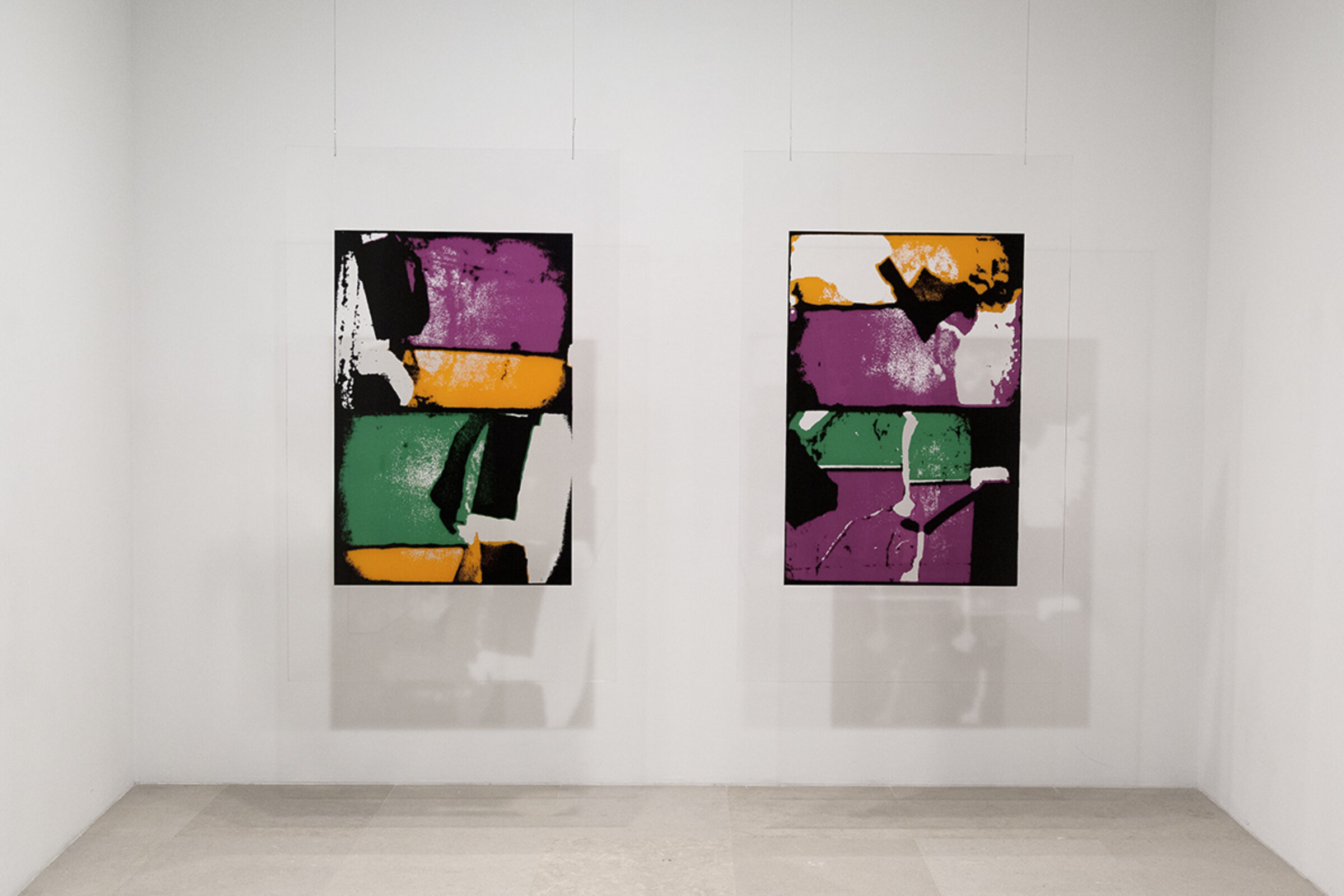Greene Naftali
Exhibition
Paul Sharits
Dream Displacement
8th Floor
Press Release
Download PDF

I want the films to have a physical presence and there is also a kind of physical adjustment I want to get between the sound and the image. It’s not any rational measure or anything—I’ve just got to figure out how to get it to be the right balance so that one is constantly threatening the other. One element threatens with violence, the other with beauty.
- Paul Sharits, Interview with Linda Cathcart, Dream Displacement and Other Projects, 1976
Greene Naftali is pleased to present a solo exhibition of works by Paul Sharits (1943-1993), the artist’s third at the gallery. This is the third time Greene Naftali has presented a seminal locational film by the artist, the first two being 3rd Degree (1982) and Shutter Interface (1975).
Sharits was a pioneering figure in experimental film, always interested in investigating the physical properties of celluloid and its related mechanical hardware: projector, film reel, and sound component. This elemental attitude towards cinema led to his advancement of multi-projector film installations in the early ‘70s—what he termed locational films—a form of filmmaking and display that sought to expand the limits of cinema by exposing its means of production.
This exhibition marks the New York City debut of Dream Displacement (1976), Sharits’ four-projector locational film installation, originally exhibited at the Albright-Knox Art Gallery in 1976 and re-presented there in 2012 for their group exhibition Wish You Here: The Buffalo Avant-Garde in the 1970s. The work, whose title departs from Freud’s discussion of dreams, combines the sounds of breaking glass through quadrophonic speakers with visuals taken from Sharits’ flicker film SPECIMEN II. As Sharits explains, the film was “shot by rephotography, first ‘traveling’ slowly in one direction, then shot, in superimposition, going in the opposite direction,” producing a continuous intersection of film frames on a horizontal register. Stripped of any narrativizing elements, the perceptual, aural, and spatial effects of the viewer emerge as primary experiences.
Also on view are works that variously focus on psychic interiority and the body, themes common throughout Sharits practice, and in particular during the time that he made Dream Displacement. These include Left Foot (1982), a large-scale two-panel painting that zooms in on a left leg, heavily veined and depicted from the calf down. Several drawings of the same subject accompany the work, including those that focus on hands in states of various contortion and distress. A selection of studies illustrating faces in shock, pain, hysteria, fear, and revulsion are also on view, heightening the sense of the body as vessel for interior strife.
Dream Displacement is a co-presentation of Greene Naftali and Anthology Film Archives, New York and has been preserved from the original materials in Anthology's collection. This exhibition has been possible through the close collaboration of Christopher Sharits/The Estate of Paul Sharits and Anthology Film Archives. This locational film has been restored thanks to the funds of the Albright Knox Art Gallery, and will also be premiered in Texas in Strange Pilgrims, The Contemporary Austin, on view September 27, 2015 through January 24, 2016.
Sharits was acknowledged during his lifetime with shows at the Walker Art Center, the Contemporary Arts Museum Houston, and the Albright-Knox Art Gallery, as well as included in documenta 6 and multiple Whitney Biennials. He was recently the subject of a retrospective at the Fridericianum, Kassel, and has been in numerous group exhibitions, including most recently America is Hard to See, Whitney Museum of Art, and Wish You Were Here: The Buffalo Avant- Garde in the 1970s, Albright Knox Art Gallery.


